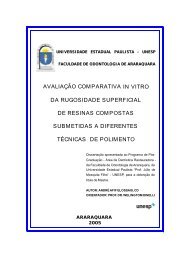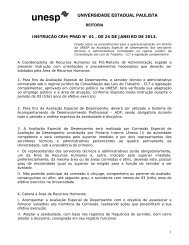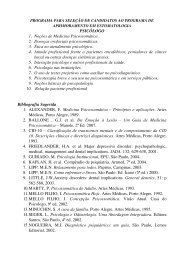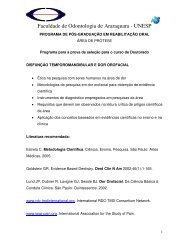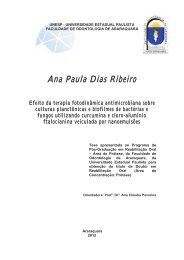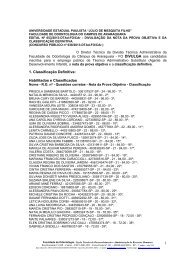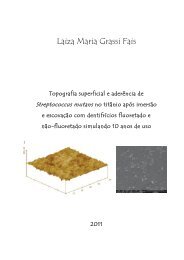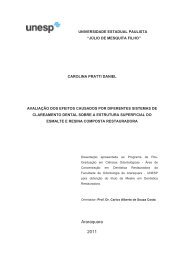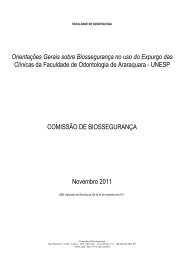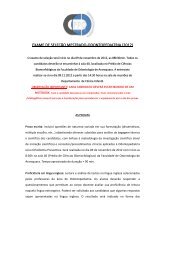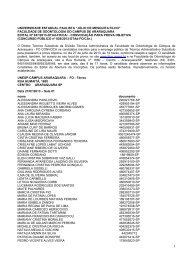universidade de são paulo - Faculdade de Odontologia - Unesp
universidade de são paulo - Faculdade de Odontologia - Unesp
universidade de são paulo - Faculdade de Odontologia - Unesp
Create successful ePaper yourself
Turn your PDF publications into a flip-book with our unique Google optimized e-Paper software.
90<br />
Introduction<br />
The ability of Candida to grow attached to oral surfaces in communities<br />
known as biofilms is an important factor in the <strong>de</strong>velopment of <strong>de</strong>nture stomatitis.<br />
Although Candida albicans still is the microorganism most often associated with<br />
this infection, non-albicans species have been isolated from <strong>de</strong>nture surfaces and<br />
oral mucosa [1]. Candida glabrata was the second most commonly isolated<br />
pathogen in patients with <strong>de</strong>nture-induced stomatitis, followed by C.<br />
pseudotropicalis, C. Krusei, C. tropicalis, C. parapsilosis and others [1]. In<br />
addition, mixed Candida albicans and Candida glabrata biofilms have been<br />
associated with <strong>de</strong>nture stomatitis [2], indicating that Candida glabrata may also<br />
play an integral role in this pathogenesis [2]. Moreover, in recent years, the<br />
prevalence of C. glabrata infections has increased, mainly in compromised<br />
patients [3]. This fact must receive attention because the mortality rate of C.<br />
glabrata infections is higher compared with infection with other non-albicans<br />
Candida and are more often difficult to treat [3].<br />
Since the adhesion of Candida spp. to surfaces is a prerequisite for the<br />
formation of biofilm and <strong>de</strong>velopment of <strong>de</strong>nture stomatitis, the inhibition of this<br />
process could be effective to treat or prevent this pathology [4]. Many factors that<br />
affect Candida adherence have been <strong>de</strong>scribed, among them the hydrophobic<br />
interactions. It has been <strong>de</strong>monstrated that these interactions are involved in the<br />
adherence of Candida to acrylic [4-8]. The closer the surface free energy of the<br />
substrate and the yeast, the higher was the probability of adherence [6]. A<br />
significant positive correlation between cell surface hydrophobicity and adhesion



